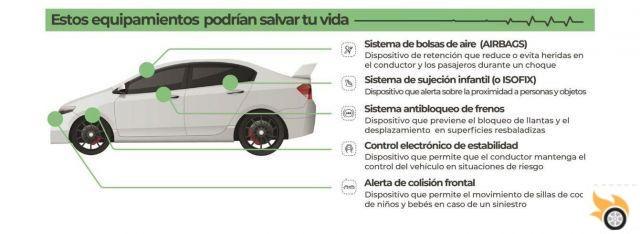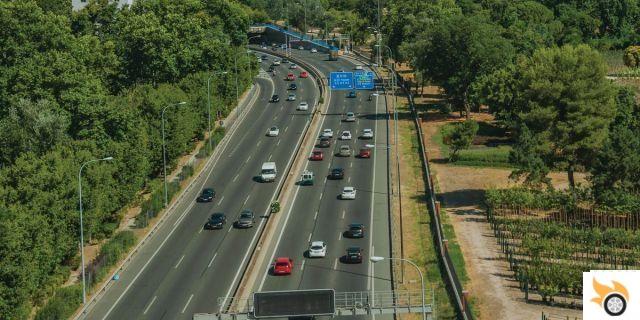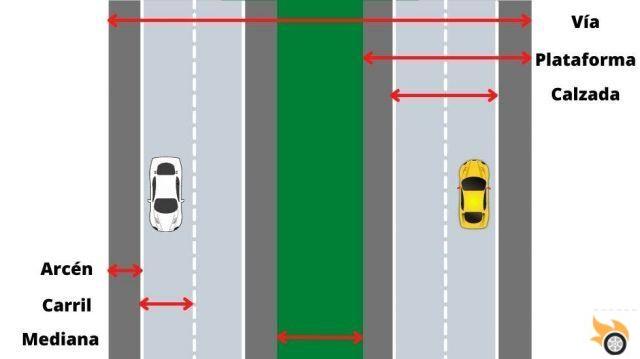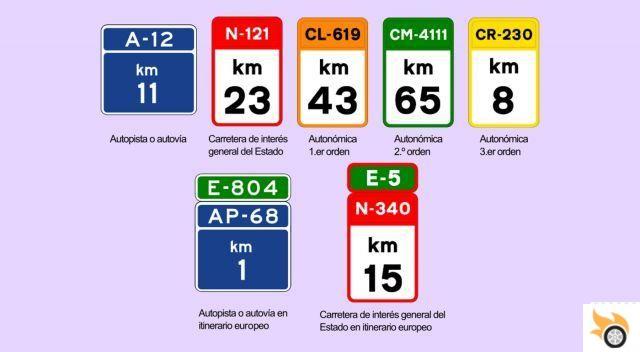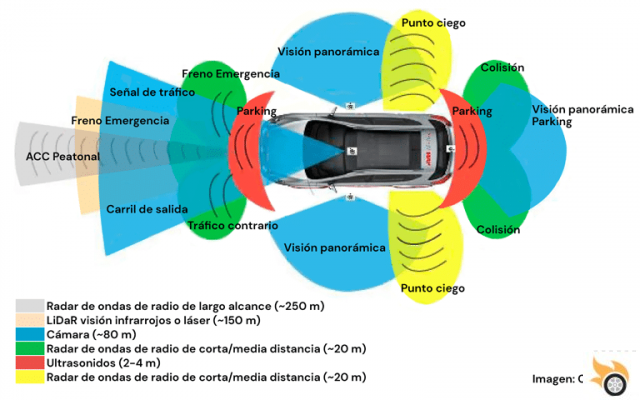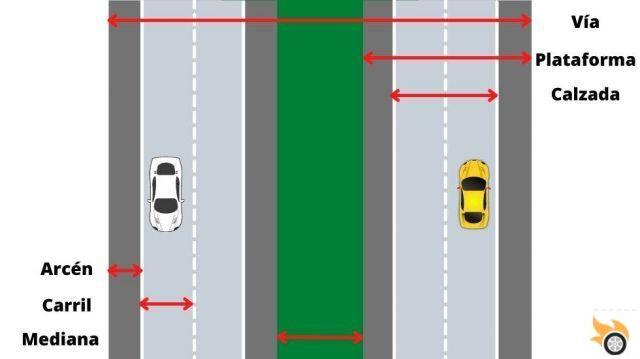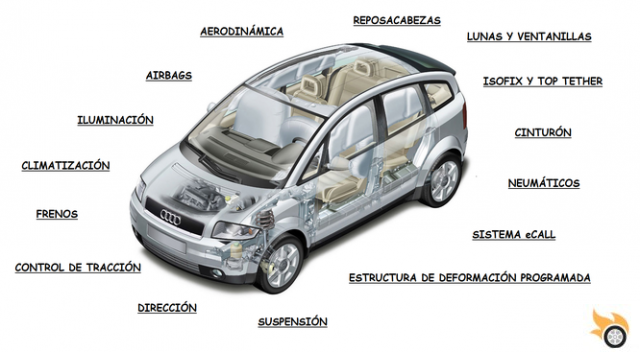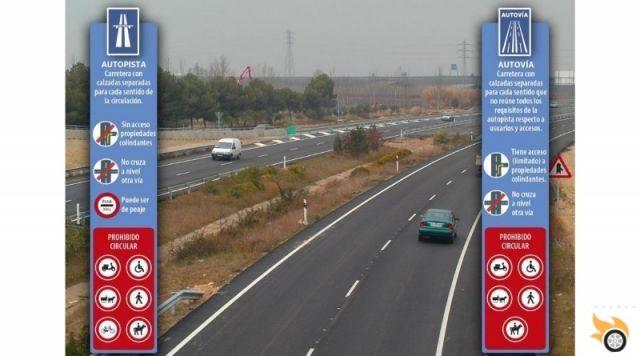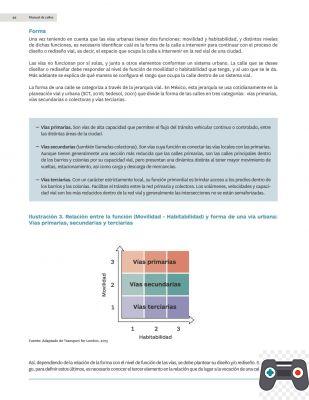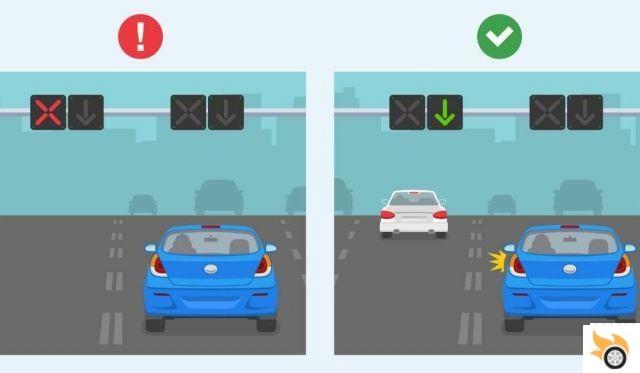
Welcome to Pistonudos.com, where we take care of providing you with detailed information on everything related to the motor world. On this occasion, we are going to talk about reversible lanes, a circulation alternative that is used on some roads to improve traffic flow. Throughout this article, we will answer the most frequently asked questions about what a reversible lane is, how it works, and what traffic rules must be followed. In addition, we will give you some tips to drive safely through these lanes.
What is a reversible lane?
A reversible lane is a traffic lane that can be used in both directions, depending on the needs of traffic at certain times of the day. This means that, in certain sections of the road, an additional lane can be enabled in the opposite direction to the usual one, thus increasing the capacity of the road and improving the flow of traffic.
How does a reversible lane work?
The operation of a reversible lane is based on the use of physical barriers or variable signaling to separate the lanes in the opposite direction. These barriers can be mobile or fixed, and are used to direct traffic in the desired direction at all times. For example, during morning rush hours, an additional lane may be provided in the direction of the city center, while during afternoon rush hours, an additional lane may be provided in the opposite direction, toward the outskirts.
Norms and rules of circulation in reversible lanes
When driving on a reversible lane, it is important to take into account the specific traffic rules and regulations that apply on this type of road. Here are some of the most important:
1. Respect the signage:
It is essential to pay attention to the variable signage that indicates the direction of the reversible lane at all times. This signage may include illuminated panels, traffic signals, and pavement markings. It is important to follow the signs and not change lanes without first verifying that it is allowed.
2. Maintain the proper speed:
It is essential to adapt speed to traffic and road conditions. In reversible lanes, it is common for the maximum speed allowed to be lower than in conventional lanes. This is because traffic may be heavier and changes in direction may require greater caution.
3. Use the lanes correctly:
It is important to use the proper lane depending on the direction you are going to take. You should always drive in the lane enabled in the opposite direction to the usual. In addition, it is essential to respect safety distances and not perform sudden or dangerous maneuvers.
4. Watch out for address changes:
In reversible lanes, it is common for direction changes to be made at certain points on the road. It is important to pay attention to signs and directions from other drivers to make lane changes safely and without interfering with traffic.
Tips for safely driving through reversible lanes
Here are some tips to help you navigate safely in reversible lanes:
1. Plan your route:
Before driving on a reversible lane, it is advisable to plan the route and know in advance the points where direction changes are made. This will allow you to anticipate maneuvers and circulate more safely.
2. Keep a safe distance:
When driving in a reversible lane, it is important to maintain an adequate safety distance from the vehicle in front. This will give you enough time to react to any unforeseen events and avoid collisions.
3. Avoid distractions behind the wheel:
On any type of road, it is essential to avoid distractions behind the wheel. However, in reversible lanes, where direction changes may be more frequent, it is even more important to keep your attention on driving and avoid using your mobile phone or other distracting devices.
4. Respect traffic regulations:
Last but not least, always respect the rules of the road. This includes following speed limits, using your turn signals when changing lanes, and yielding when necessary. Complying with traffic regulations is essential to guarantee road safety.
Frequently asked questions about reversible lanes
1. What vehicles can circulate in the reversible lanes?
Reversible lanes are designed to be used by all types of vehicles, including cars, motorcycles, trucks, and buses. However, it is important to take into account the specific restrictions that may apply on certain roads, such as the prohibition on driving cargo vehicles during peak hours.
2. What happens if I make a mistake and drive the wrong way in a reversible lane?
If you make a mistake and go the wrong way in a reversible lane, it is important that you stop immediately in a safe place and look for an exit to correct your trajectory. Do not attempt to turn or back into the reversible lane, as this can be extremely dangerous. Follow the indications of the signs and look for an alternative route to get back on your way.
Conclusion
In short, reversible lanes are a circulation alternative used to improve traffic flow on certain roads. Its operation is based on the provision of additional lanes in the opposite direction to the usual one, using physical barriers or variable signaling to direct traffic in the desired direction. When driving through these lanes, it is important to respect the signs, maintain the appropriate speed, use the lanes correctly and be aware of changes in direction. By following these rules and tips, you will be able to travel safely through the reversible lanes and contribute to the flow of traffic.
We hope this article has been useful to you. If you have any additional questions or want to share your experience about reversible rails, feel free to leave us a comment. We will be happy to read you and answer your concerns!
Until next time,
The Pistonudos.com team




